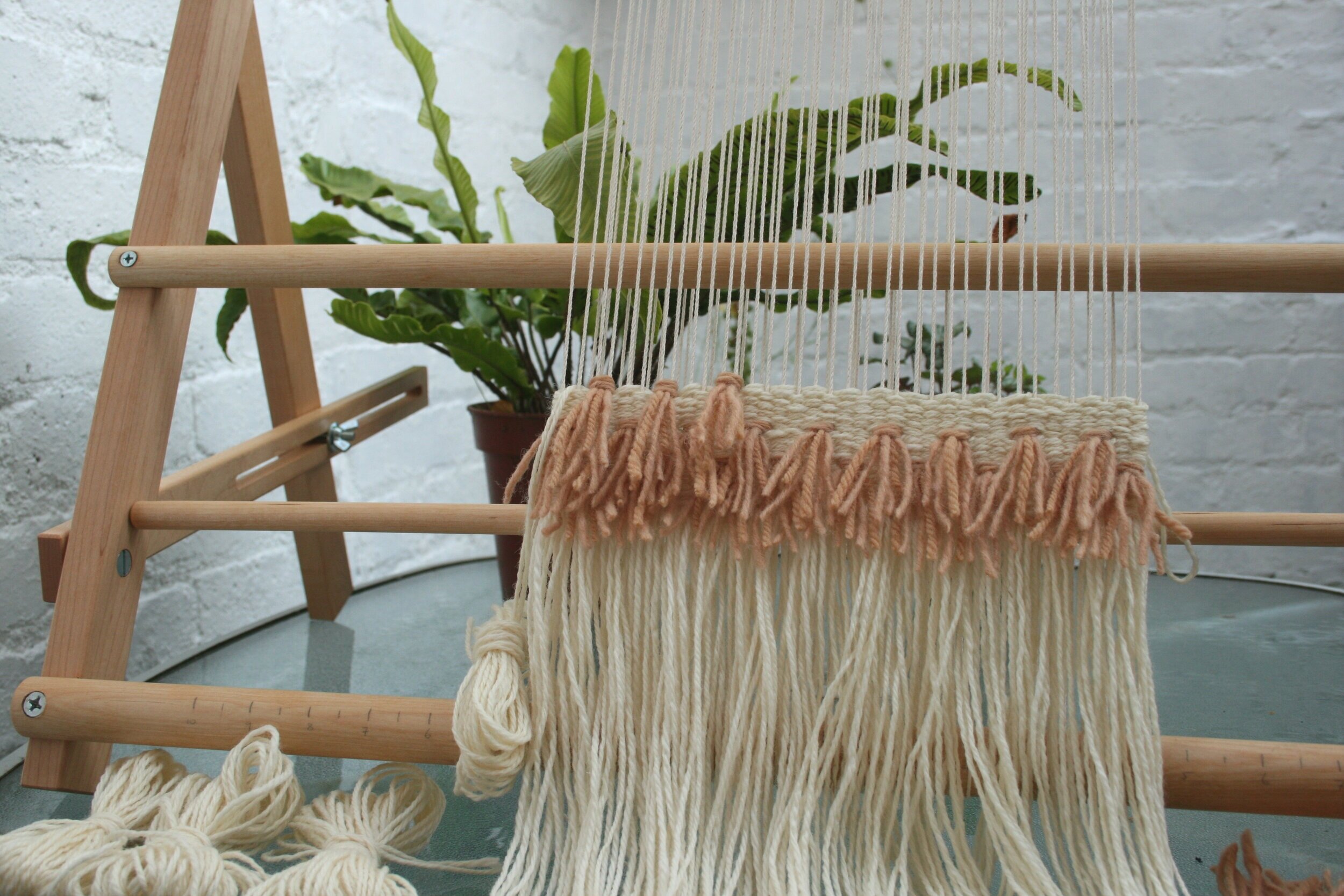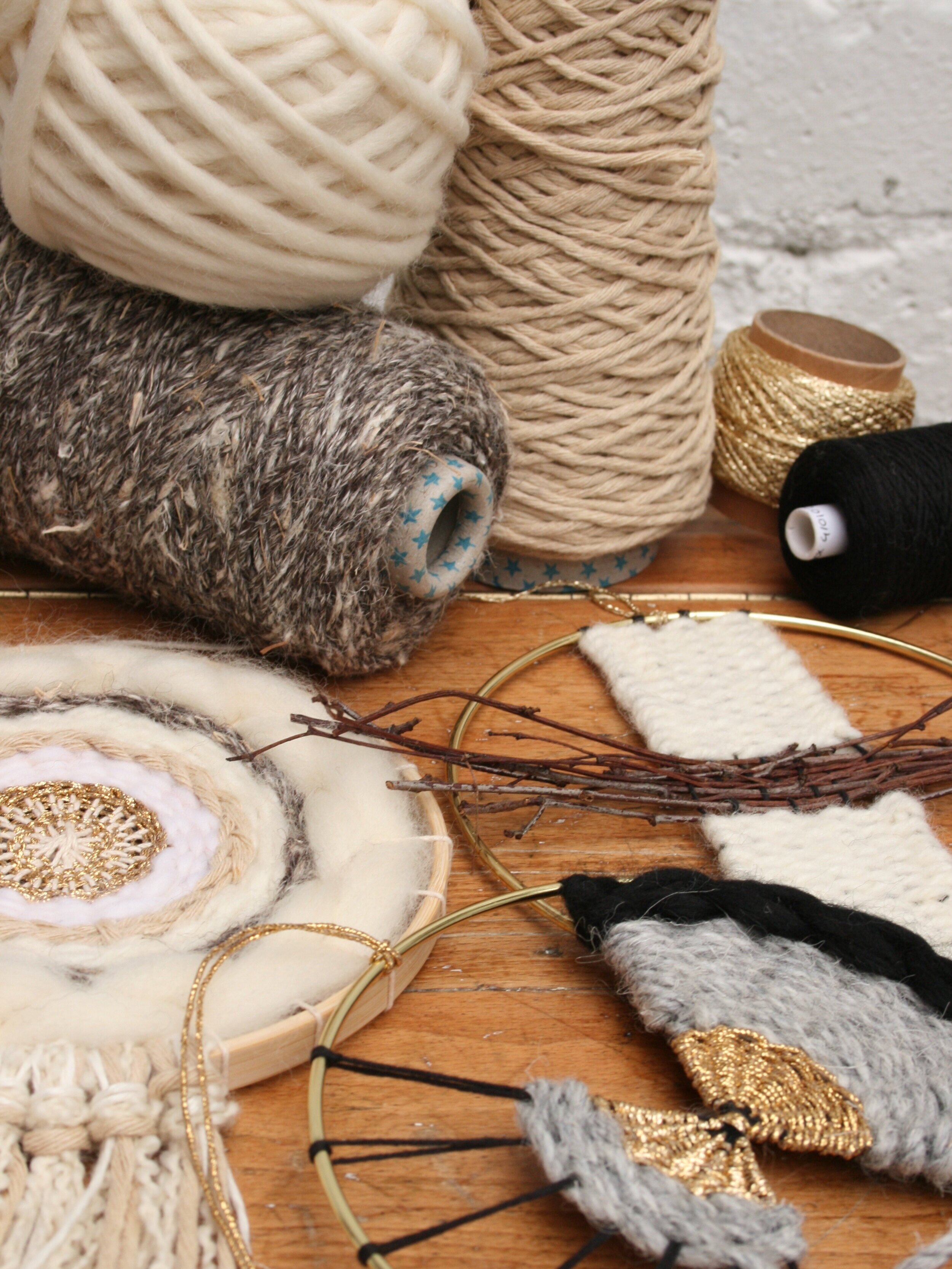Weaving at Home
I’ve really enjoyed teaching weaving workshops in the past and it’s something I hope to get back into in the future, online or in person, or hopefully, both. But for now, I thought I’d share some resources that might be helpful for anyone interested in starting to weave in the comfort of your own home.
One of the positive outcomes of various lockdown measures during the COVID-19 pandemic is the massive increase in online learning and resources available to all regardless of locality. Although learning through a screen can never quite compare with personal interaction with a teacher and fellow students, it can open a whole new world of possibilities to those who find it difficult to get to workshops at the best of times, regardless of the current circumstances.
I learned to weave at art college in Dublin, but as the course had a big emphasis on design and theory, I graduated with a very limited technical ability. Armed with a huge wooden loom in bits and not a lot of money, I slowly figured things out using books, online forums, emails and downloadable videos. It wasn’t the perfect way to learn, but means to an end.
I wrote in a previous post about choosing a loom and how tapestry (or frame loom) weaving is a great technique for beginner weavers to learn as it requires only basic equipment and can be used in hugely diverse ways.
Get Your Kit
Please don’t feel that you have to spend a lot of money or buy fancy equipment to get started in weaving – you really don’t. Intricate weaving, particularly of a heavier weight for hanging artworks or rugs, can be achieved on the most basic loom.
I’ve been lucky to see first-hand the amazing weaving that emerges from rural communities in places like Peru & Bolivia – the weavers don’t have complicated equipment but instead are blessed with a rich heritage of skills and the patience needed to execute their vision.
A basic but versatile frame loom can be made simply & cheaply using an artist’s stretcher frame, for example, marked out with measurements along the top and bottom. This is how I first learned to weave tapestry in college.
Having said that, there are however, many craft suppliers & small companies who make things a little easier for beginners with clever bits of kit. Weftblown, George Weil & The Handweavers Studio are UK-based general weaving suppliers who stock well-known brands and a good variety of equipment. There are also many weavers who supply their own bespoke kit alongside an offering of workshops or online tutorials, including those mentioned below.
Christabel Balfour is a London-based weaver specialising in geometric tapestry & rug weaving. She has recently launched a separate business for her teaching & weaving kits, Balfour & Co, where she sells her online courses along with the materials and tools needed, including a sturdy upright rug loom.
Fiona Daly is a recent MA graduate from the Chelsea College of art and the author of ‘Little Loom Weaving’, a guide to frame loom weaving. The book (yes, a real book!) includes a brief history of weaving, useful tools and terminology, and a natural fibre and yarn index, step-by-step tutorials and five patterns for contemporary projects. Fiona also offers weaving kits on her online shop.
If you use Instagram, you can find lots of inspiration and sometimes video tutorials. Majeda Clarke is a woven textile artist based in Cockpit Arts, London who has recently posted a series of simple weaving videos on her page.
Weavers Bazaar was founded by tapestry artists Lin Squires & Matty Smith. They sell a large range of colours of woollen yarns suitable for tapestry weaving, as well as frame looms made to their own design. Check out the ‘Knowledge Zone – Learning for Free’ section of the website for a wealth of information & videos about tapestry weaving. They also have a good free guide to warping a tapestry loom at www.weaversbazaar.com/knowledge-zone/warps
There are so many more resources online than I could ever cover here, but I will add to this list as I discover interesting ones!
Building a Stash
Lastly and perhaps the most fun bit of prepping for a weaving project – gathering your yarn! I won’t say too much here as you are really only limited by your imagination and the past few years have seen a blossoming of indie yarn dyers – many of whom commission small mills to spin bespoke yarns for them using local fibre.
Woolly Mammoth Fibre Company – A small hand dyeing and spinning studio based on the North Coast of Northern Ireland, created by Emma Robinson. Emma’s yarns are coveted by knitters around the world but I think they would also serve as beautiful weaving yarns for a special piece. Many of her yarns are spun from locally-sourced fibre.
Airedale Yarns – Located in Yorkshire, Airedale Yarns offer a variety of yarns in many different fibres, including British wool & Axminster rug yarn.
World of Wool – Also Yorkshire-based, stocking a large range of woollen fibre and yarns of varying weights.
Jamieson’s of Shetland – Spinners & retailers of authentic Shetland wool in a range of subtle marled shades.
Weavers Bazaar – as mentioned above, stocking their own bespoke dyed range of specialist tapestry weaving yarn.
I hope this has given you some inspiration to get started in weaving at home, whatever your budget or space. Weaving can sometimes seem very technical but remember to focus as much on the process as the end result - there are no mistakes, just lessons!



